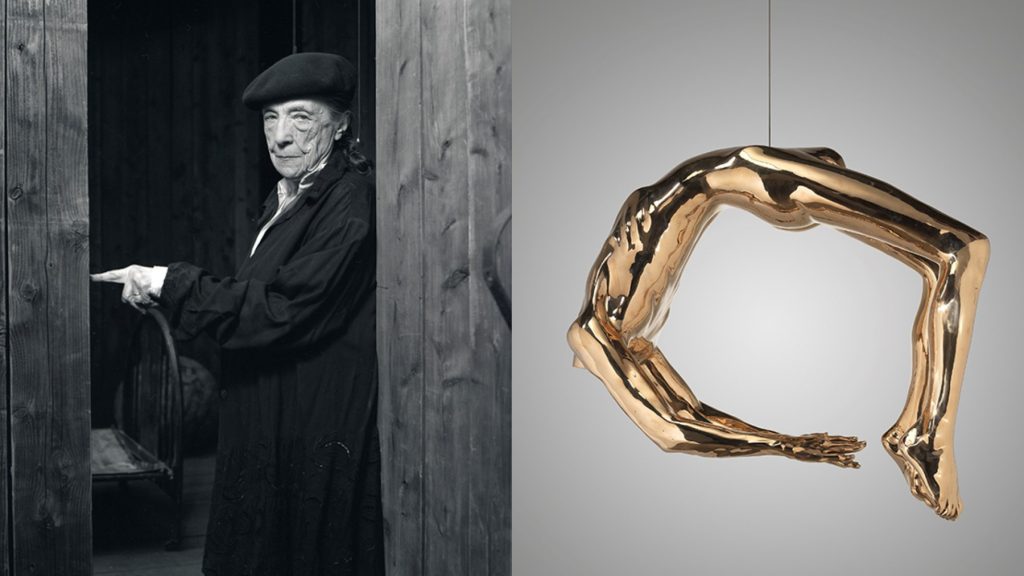
The Journey and Creativity of Louise Bourgeois: From Her French Roots to Legendary Spider Sculptures

Louise Bourgeois: The Life and Impact of an Innovative Artist
French-American artist Louise Bourgeois (December 25, 1911 – May 31, 2010) left a profoundly personal and emotionally charged legacy that traversed nearly eight decades and various artistic forms. Today, she is best known for her large spider sculptures, yet Bourgeois resisted being confined to a single artistic movement, instead embarking on a uniquely personal artistic journey that mirrored her tumultuous history while delving into universal themes such as memory, trauma, family, and the human condition. Her candid investigation of the psyche and personal experiences positioned her as one of the most significant artists of the 20th and early 21st centuries.
Louise Bourgeois’ Early Years
Born in Paris to tapestry restorers, Bourgeois was introduced to the art world early on, contributing to the repair of historic textiles and often sketching in missing sections to match the original designs. Nevertheless, her formative years were fraught with emotional turmoil. Her mother, Joséphine, faced chronic illness, with Bourgeois acting as her primary caregiver. Concurrently, her father engaged in an open affair with the family’s live-in English tutor, further complicating the young Bourgeois’ perceptions of trust, family dynamics, and sexuality.
This early emotional upheaval would prominently influence her artistic output throughout her life. After beginning studies in mathematics at the Sorbonne in 1930, she transitioned to art following her mother’s passing in 1932. She took classes at various art academies in Paris to refine her craft. During this time, she also grew disenchanted with the notion of artistic “genius,” which she perceived as a product of male-centric structures.
Marriage and Move to the United States
In 1938, Louise Bourgeois encountered American art historian Robert Goldwater in Paris, leading to their marriage that same year. The couple relocated to New York City, which would serve as Bourgeois’ home and artistic hub for the remainder of her life.
In New York, Bourgeois initially concentrated on painting before shifting her focus to sculpture in the mid-1940s. She experimented with materials such as wood, bronze, latex, and plaster, which provided novel means to articulate her inner experiences. For many years, her work went largely unnoticed by the mainstream art community, yet she persistently cultivated a distinctive visual language characterized by emotion, surreal shapes, and references to the body.
Psychological Depth and Symbolism in Her Artworks
Throughout the 1950s and 60s, Bourgeois participated in psychoanalysis for over a decade. These therapeutic sessions profoundly influenced her art, prompting her to create pieces rich in symbolism and autobiographical elements. Rather than concealing her past, Bourgeois regarded it as vital material for her artistic endeavors.
Among the most iconic works from this period is Janus Fleuri (1968), a suspended bronze sculpture featuring two protrusions that reflect both masculine and feminine forms. Named after the Roman deity Janus—representative of transitions, gateways, and duality—this piece embodies her continued investigation into identity, gender, and emotional contrasts. For Bourgeois, the blend of abstraction and figuration emerged as a compelling way to engage with unresolved issues from her history.
Maman: The Spider and Its Significance
No symbol is more synonymous with Bourgeois than the spider. Initially featured in her drawings, this arachnid gradually transformed into a series of monumental sculptures, with Maman being arguably the most well-known. These towering, eight-legged forms began their development in the 1990s and became instantly recognizable for their scale and emotional resonance.
Maman, which translates to “mom” in French, serves as a homage to Bourgeois’ mother, Joséphine. “She was intentional, intelligent, patient, nurturing, rational, delicate, subtle, essential, tidy, and as resourceful as a spider,” Bourgeois once reflected. Spiders are remarkable not just for their maternal connections (many are nurturing beings) but also for their weaving capabilities—mirroring Bourgeois’ early experiences with tapestry restoration.
Installed at various prestigious venues worldwide, including the Tate Modern in London and the Guggenheim Museum Bilbao, Maman simultaneously conveys an aura of intimidation and delicacy. The towering metal legs encircle an empty space, while a pouch of marble eggs symbolizes protection and fertility. This juxtaposition underscores Bourgeois’ capacity to encapsulate dual emotions—fear and comfort, safety and threat—within a dynamic interplay.
Varied Media and Steadfast Creativity
While sculpture was her most visible discipline, Bourgeois engaged with a diverse array of media throughout her career, including painting, printmaking, installations, and fabric arts. In her later life, she began to incorporate textiles, seeking to forge deeper connections to her childhood and domestic experiences. Repurposed clothing and household linens became integral to her Cell series—small environments that encapsulated personal memories and psychological states within structural frameworks. These Cells, initiated in the 1980s and continuing until her death, remain